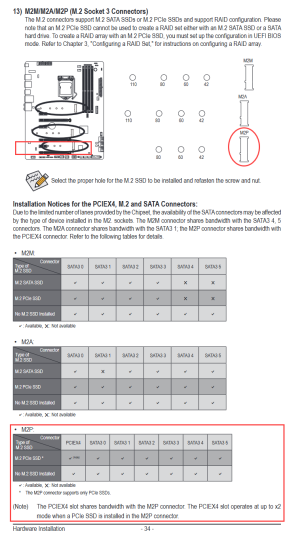Coldblackice
[H]ard|Gawd
- Joined
- Aug 14, 2010
- Messages
- 1,152
Generally, does distance between m2 slot and CPU bear any impact whatsoever in terms of latency/performance/response time?
Specifically, on a Gigabyte Z390 Aorus Master (with a WD Black SN750 1TB NVMe drive), there are 3x m2 slots. I've RTFM already (attached) and have had the SN750 plugged into the bottom slot, furthest from CPU, due to it appearing to not route any of its lanes through the chipset, as I inferred that'd have the fastest responsiveness of the three.
However, I'm second-guessing, wondering why they'd place this slot (M2P) on the opposite side of the board from the CPU, and likewise the chipset-laned slot (M2M) furthest away from the chipset.
I assume any performance differences between these slots (assuming equally unloaded) is likely negligible, or at least not humanly noticeable. I'm still curious on this though from a theoretical perspective.
Specifically, on a Gigabyte Z390 Aorus Master (with a WD Black SN750 1TB NVMe drive), there are 3x m2 slots. I've RTFM already (attached) and have had the SN750 plugged into the bottom slot, furthest from CPU, due to it appearing to not route any of its lanes through the chipset, as I inferred that'd have the fastest responsiveness of the three.
However, I'm second-guessing, wondering why they'd place this slot (M2P) on the opposite side of the board from the CPU, and likewise the chipset-laned slot (M2M) furthest away from the chipset.
I assume any performance differences between these slots (assuming equally unloaded) is likely negligible, or at least not humanly noticeable. I'm still curious on this though from a theoretical perspective.
![[H]ard|Forum](/styles/hardforum/xenforo/logo_dark.png)

